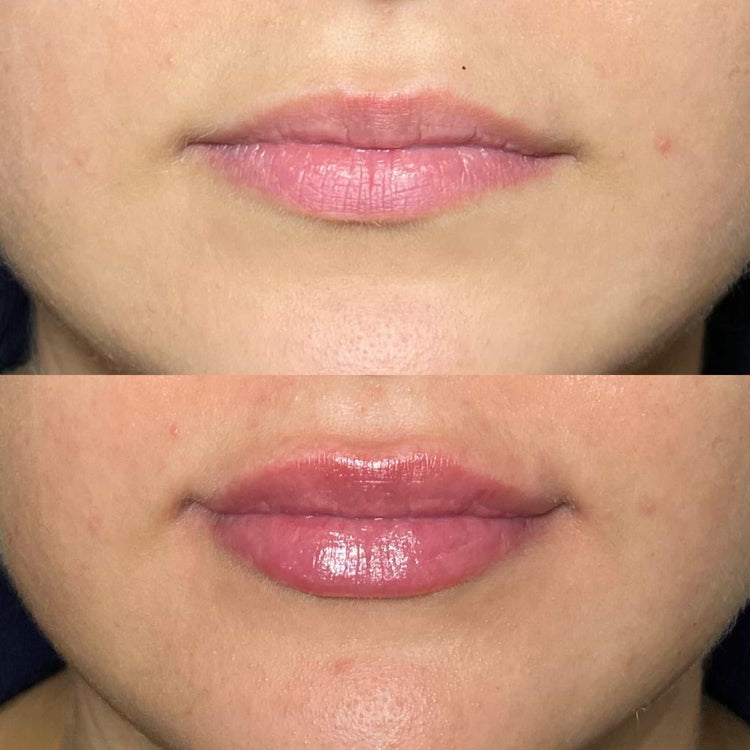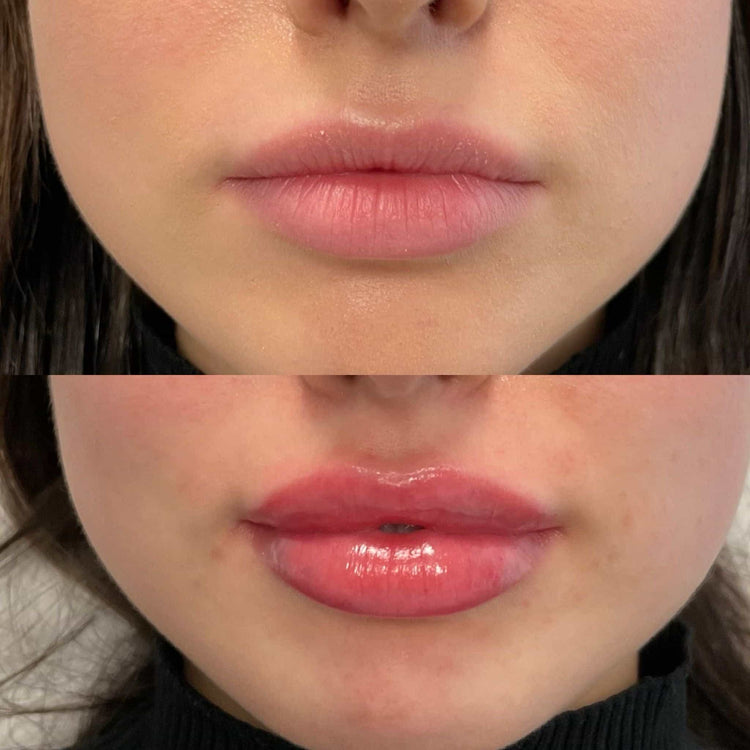Dermal Filler Ingredients
Dermal fillers are a popular cosmetic treatment used to restore volume, smooth wrinkles, and enhance facial features. These injectable gels are typically composed of hyaluronic acid, a natural substance found in the body that helps maintain skin hydration and elasticity. Other ingredients commonly found in dermal fillers include calcium hydroxylapatite, poly-L-lactic acid, and synthetic polymers. Understanding the science behind these ingredients is crucial for patients considering this procedure, as it sheds light on how they work to achieve desired aesthetic results.
Hyaluronic Acid Fillers
Hyaluronic acid fillers are among the most popular dermal fillers used today. Hyaluronic acid is a naturally occurring substance in the body that binds water, effectively plumping up skin and providing volume. When injected, hyaluronic acid fillers act like tiny sponges, attracting and retaining moisture to smooth wrinkles, enhance lips, or add definition to cheeks and other areas. These fillers are biodegradable, meaning they are gradually absorbed by the body over time, typically lasting anywhere from six months to two years.
Collagen Fillers
Collagen fillers offer another approach to dermal augmentation. Collagen is a protein that provides structural support to the skin, contributing to its firmness and elasticity. Collagen fillers are derived from bovine or porcine sources, although some synthetic collagen alternatives exist. When injected, they work by replenishing lost collagen in the skin, thereby reducing the appearance of wrinkles, folds, and other signs of aging.
However, it is important to note that collagen fillers tend to have a shorter lifespan compared to hyaluronic acid fillers, often lasting only a few months before being naturally broken down by the body.

Calcium Hydroxylapatite Fillers
Calcium hydroxylapatite (CaHA) is a biocompatible and biodegradable material derived from bone minerals. It is used in dermal fillers because it can stimulate the production of collagen, a protein essential for skin structure and elasticity. When injected, CaHA microspheres interact with the body’s cells, triggering a natural healing response that leads to increased collagen synthesis.
CaHA fillers are known for their ability to provide long-lasting results, often lasting up to two years or more. They are also relatively safe and have minimal side effects. As with any dermal filler, it is important to consult with a qualified medical professional to determine if CaHA fillers are appropriate for your individual needs and aesthetic goals.
Poly-L-Lactic Acid Fillers
Poly-L-lactic acid (PLLA) is another type of dermal filler that works through a different mechanism than hyaluronic acid or collagen.
- PLLA is a biodegradable synthetic polymer that stimulates the body’s own collagen production.
- When injected, PLLA particles act as a scaffold, prompting fibroblasts (cells responsible for collagen production) to generate new collagen fibers around the implanted material.
- This gradual process of collagen synthesis results in a subtle and natural-looking volume increase over time.
- PLLA fillers typically require multiple injections spaced several weeks apart to achieve the desired outcome.
- The effects of PLLA fillers can last for up to two years or longer, as the newly produced collagen gradually replaces the original PLLA particles.
How Dermal Fillers Work
Dermal fillers are injectables designed to enhance facial contours and smooth wrinkles. These gels are made from various substances, each with unique properties that contribute to their effectiveness.
Binding with Water Molecules

Hyaluronic acid is a naturally occurring substance in the body that attracts and binds water molecules. This ability to hold moisture is what gives hyaluronic acid fillers their plumping effect. When injected, they act like sponges, attracting water from surrounding tissues and increasing skin volume. This helps smooth wrinkles, enhance lips, and define areas like cheeks.
Other dermal filler ingredients like calcium hydroxylapatite (CaHA) work by stimulating the body’s own collagen production. CaHA microspheres interact with cells, triggering a response that leads to increased collagen synthesis. Collagen is a protein crucial for skin structure and elasticity, so boosting its levels helps improve skin firmness and reduce the appearance of wrinkles.
Poly-L-lactic acid (PLLA) takes a different approach. PLLA is a synthetic polymer that acts as a scaffold for new collagen growth. When injected, it prompts fibroblasts, the cells responsible for collagen production, to create new collagen fibers around the PLLA particles. This gradual process of collagen synthesis results in a subtle and natural-looking volume increase over time.
Volume Restoration and Skin Plumping
Dermal fillers are injectables designed to enhance facial contours and smooth wrinkles. These gels are made from various substances, each with unique properties that contribute to their effectiveness.
Hyaluronic acid is a naturally occurring substance in the body that attracts and binds water molecules. This ability to hold moisture is what gives hyaluronic acid fillers their plumping effect. When injected, they act like sponges, attracting water from surrounding tissues and increasing skin volume. This helps smooth wrinkles, enhance lips, and define areas like cheeks.
Other dermal filler ingredients like calcium hydroxylapatite (CaHA) work by stimulating the body’s own collagen production. CaHA microspheres interact with cells, triggering a response that leads to increased collagen synthesis. Collagen is a protein crucial for skin structure and elasticity, so boosting its levels helps improve skin firmness and reduce the appearance of wrinkles.
Poly-L-lactic acid (PLLA) takes a different approach. PLLA is a synthetic polymer that acts as a scaffold for new collagen growth. When injected, it prompts fibroblasts, the cells responsible for collagen production, to create new collagen fibers around the PLLA particles. This gradual process of collagen synthesis results in a subtle and natural-looking volume increase over time.
Stimulating Collagen Production**
Dermal fillers offer a way to restore lost volume, smooth wrinkles, and enhance facial features. They work by either directly plumping up skin or stimulating the body’s own collagen production.
Hyaluronic acid fillers are a popular choice because they attract and retain moisture. When injected, they act like sponges, increasing skin volume and smoothing wrinkles. These fillers are biodegradable, meaning they are gradually absorbed by the body over time.
Calcium hydroxylapatite (CaHA) fillers work differently. They are made from bone minerals and stimulate collagen production. CaHA microspheres interact with cells, triggering a response that leads to increased collagen synthesis. This helps improve skin firmness and reduce the appearance of wrinkles.
Poly-L-lactic acid (PLLA) fillers also promote collagen production but through a different mechanism. PLLA is a synthetic polymer that acts as a scaffold for new collagen growth. When injected, it prompts fibroblasts to create new collagen fibers around the PLLA particles. This gradual process results in a subtle and natural-looking volume increase over time.
Types of Dermal Filler Treatments
Dermal fillers offer a non-surgical way to enhance facial contours and reduce the signs of aging. These injectable gels are made from various substances, each working in a unique way to achieve desired aesthetic results. Understanding these mechanisms is crucial for patients considering this popular cosmetic treatment.
Lip Augmentation
Dermal fillers are injectables designed to enhance facial contours and smooth wrinkles. There are several types of dermal filler treatments available, each using different ingredients that work in unique ways.
Lip augmentation is a popular use for hyaluronic acid fillers. These fillers add volume and definition to the lips, creating a fuller, more youthful appearance. They work by attracting water molecules to the injection site, plumping up the lips and smoothing out any lines or wrinkles around them.
Other types of dermal fillers, such as calcium hydroxylapatite (CaHA), stimulate collagen production in the skin. This helps improve skin firmness and elasticity, reducing the appearance of wrinkles and fine lines. While not specifically designed for lip augmentation, CaHA fillers can be used to enhance the overall shape and definition of the lips.
Wrinkle Reduction (Nasolabial Folds, Marionette Lines)
Dermal fillers are a popular choice for reducing the appearance of wrinkles, particularly nasolabial folds (lines that run from the nose to the corners of the mouth) and marionette lines (lines that extend downward from the corners of the mouth).
Hyaluronic acid fillers are often used to smooth these wrinkles by plumping up the skin and filling in the depressions. They work by attracting and holding water molecules, effectively increasing skin volume and smoothing out wrinkles.
Calcium hydroxylapatite (CaHA) fillers can also be effective for treating nasolabial folds and marionette lines. CaHA stimulates collagen production, which helps improve skin firmness and elasticity. This can lead to a reduction in the appearance of wrinkles over time.
Cheek Augmentation**
Cheek augmentation is a popular dermal filler treatment that aims to enhance facial volume and definition by adding fullness to the cheeks.
Hyaluronic acid fillers are frequently used for cheek augmentation due to their ability to attract and retain water molecules, effectively plumping up the cheeks and creating a more youthful and sculpted appearance.
Calcium hydroxylapatite (CaHA) fillers can also be effective for cheek augmentation. CaHA stimulates collagen production, which contributes to a gradual increase in cheek volume and a more defined contour.
Jawline Contouring**

Jawline contouring is a popular procedure that uses dermal fillers to enhance the definition of the jawline. This treatment aims to create a more sculpted and chiseled appearance by adding volume to the area beneath the jaw.
Hyaluronic acid fillers are commonly used for jawline contouring because they can effectively add volume and create a smooth, natural-looking transition from the jaw to the neck.
Calcium hydroxylapatite (CaHA) fillers can also be used for jawline contouring. CaHA stimulates collagen production, which can help improve skin firmness and elasticity in the jawline area over time.
Potential Side Effects and Risks
While dermal fillers offer numerous benefits, it is important to be aware of potential side effects and risks associated with these procedures.
Bruising and Swelling
Potential side effects of dermal fillers are generally mild and temporary, including redness, swelling, bruising, itching, tenderness, and pain at the injection site. These side effects usually subside within a few days to a week. More serious side effects, such as infection, allergic reaction, or vascular occlusion (blockage of blood vessels), are rare but possible.
It is crucial to consult with a qualified and experienced medical professional before undergoing any dermal filler treatment. They can assess your individual needs, medical history, and potential risks to determine if this procedure is appropriate for you.
Following the post-treatment instructions provided by your practitioner is essential for minimizing side effects and ensuring optimal results.
Redness and Tenderness
While dermal fillers offer numerous benefits, it is important to be aware of potential side effects and risks associated with these procedures.
Potential side effects of dermal fillers are generally mild and temporary, including redness, swelling, bruising, itching, tenderness, and pain at the injection site. These side effects usually subside within a few days to a week.
More serious side effects, such as infection, allergic reaction, or vascular occlusion (blockage of blood vessels), are rare but possible.
Infection Risk**
Potential side effects and risks associated with dermal fillers should always be carefully considered. While generally safe, there are potential complications that can arise.
- Infection: Any injection carries a risk of infection. It’s crucial to ensure the practitioner uses sterile techniques and you practice proper aftercare to minimize this risk.
- Allergic Reactions: Some individuals may be allergic to the ingredients in dermal fillers. A patch test can help identify potential allergies before treatment.
- Vascular Occlusion: This serious complication involves blockage of blood vessels, potentially leading to tissue damage or loss. It’s essential to have a practitioner experienced in avoiding this risk.
Aftercare Instructions
Understanding the potential side effects and risks associated with dermal fillers is crucial for making an informed decision about this cosmetic treatment.
Potential complications, though rare, can occur. It’s important to discuss these with your practitioner during a consultation.
Applying Cold Compresses**
Applying cold compresses after dermal filler injections can help reduce swelling and discomfort.
- Apply a cold compress for 10-15 minutes at a time, several times a day.
- Use an ice pack wrapped in a towel or a bag of frozen vegetables.
- Avoid direct contact between the ice and your skin to prevent frostbite.
Avoiding Sun Exposure**
Avoiding sun exposure is crucial after dermal filler treatment.
Sun exposure can break down hyaluronic acid, which is found in many fillers, causing them to degrade faster and potentially leading to uneven results.
It is recommended to avoid direct sun exposure for at least two weeks after treatment. Use sunscreen with an SPF of 30 or higher daily to protect your skin from further damage, even on cloudy days. Wear protective clothing like hats and sunglasses when outdoors.
Maintaining Hydration**
Aftercare instructions are essential for optimal results and minimizing potential complications following dermal filler treatments.
Staying hydrated is crucial after receiving dermal fillers. Water helps to plump the skin and promote the effectiveness of hyaluronic acid fillers. Aim to drink plenty of water throughout the day, especially in the days following your treatment.
Learn more about wrinkle-smoothing dermal fillers with Dr. Laura Geige at It’s Me & You Clinic
- Why Does My Lip Filler Keep Migrating - November 3, 2025
- What Is The Difference Between CBD Gummy Edibles And Tinctures - October 31, 2025
- What Are The Best CBD Gummy Sweets For Daily Use - October 30, 2025
